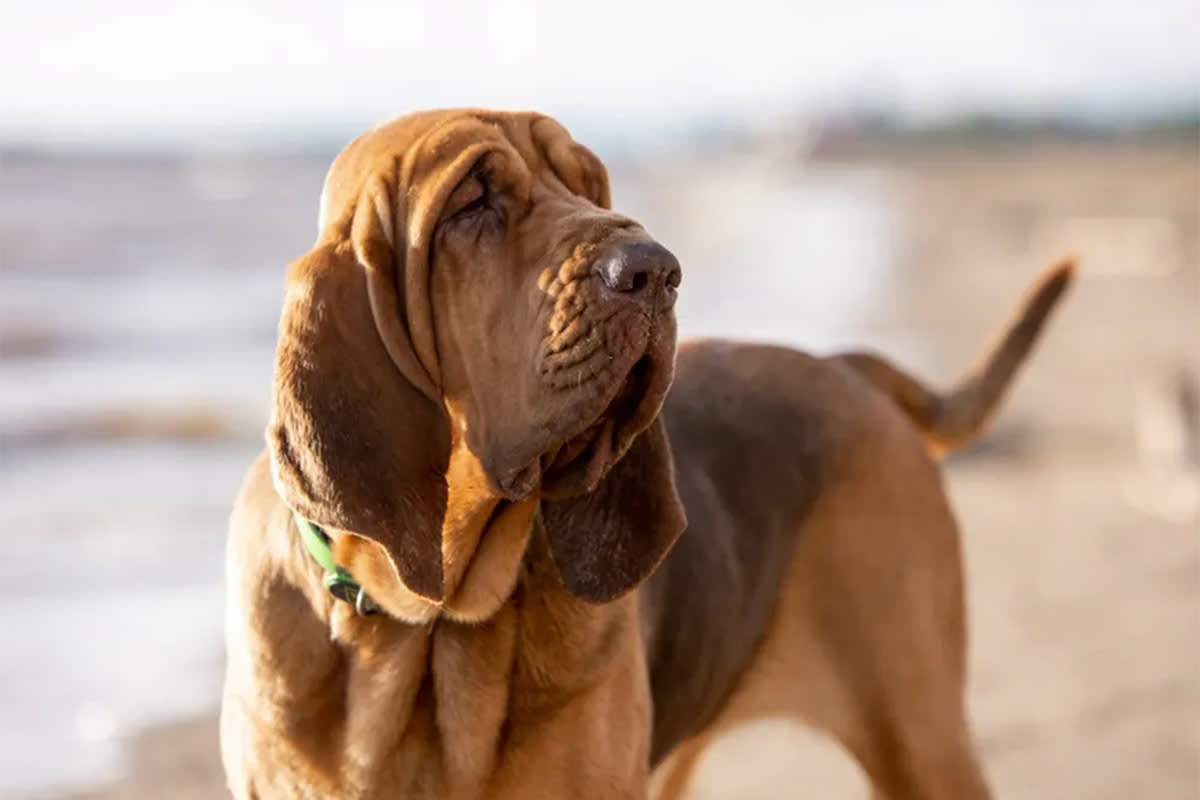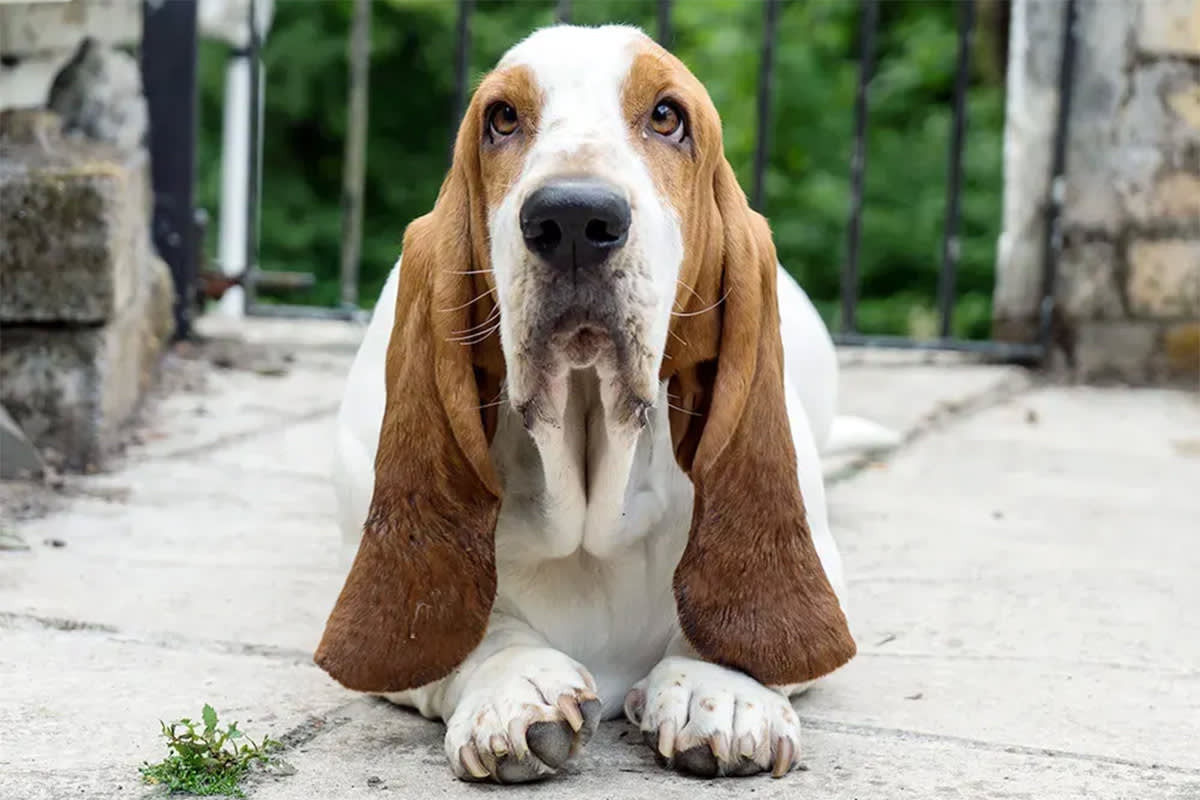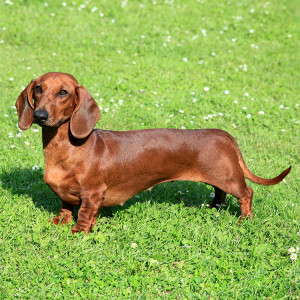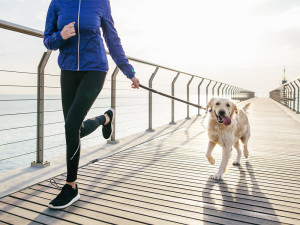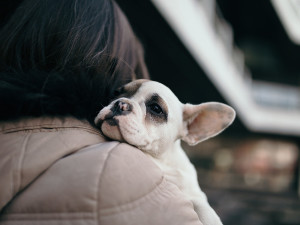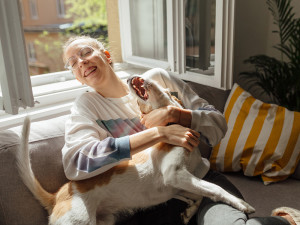The Real Reason Some Dogs Have Such Droopy Jowls
Find out how that adorably saggy face came to be.
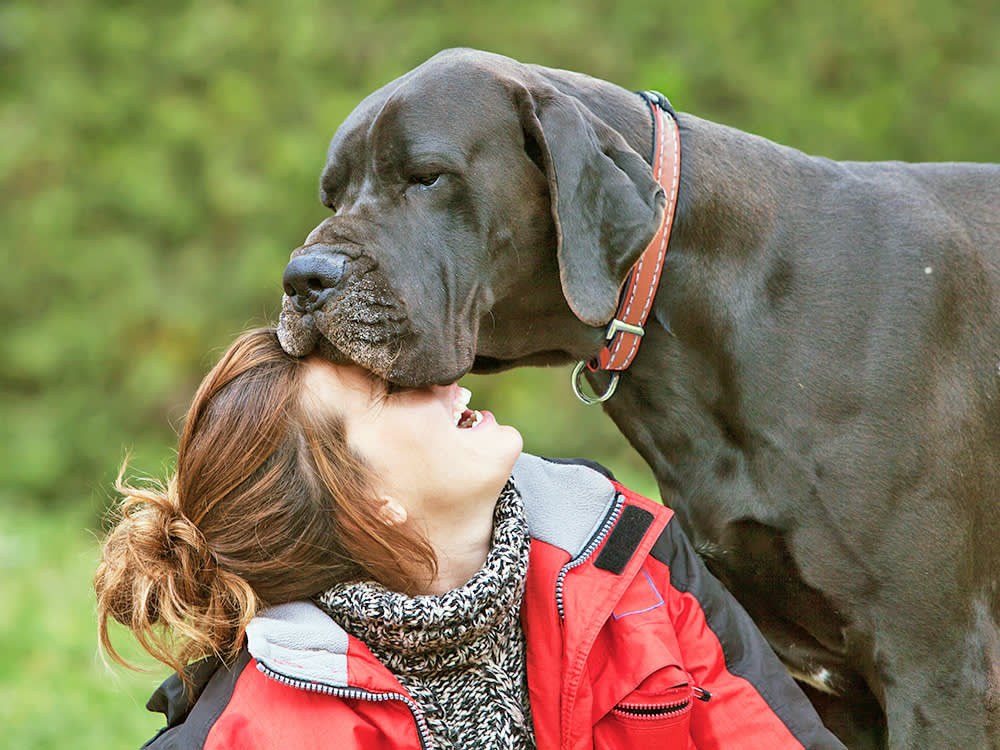
Share Article
Often I find myself cracking up at the fact that my Pitt Bull mix Bella’s cheeks are essentially turned outside of her mouth. Due to the nature of her jowls — the loose flaps of skin that hang on either side of a dog’s face — her mouth is perpetually open. On the sides of her face, her sweet pink cheeks are always showing a little bit.
While she doesn’t have quite the exaggerated droopy jowls of breeds like Basset Hounds or Mastiffs, hers are still prominent. The loose, extra skin around her mouth results in her dripping water all over the floor after she drinks from the bowl, drooling a little when she’s lying on the couch, (or sometimes just when she gets excited), and puffing air out of the side of her mouth when she’s animated or walking briskly.
As my past dogs were all Terrier mixes, with longer, narrow faces and snouts, cheeks firmly tucked inside their mouth, I find this look fascinating. And beyond being entertained by the breed-specific quirk, I wondered why certain dogs have these flappy jowls while others don’t. Is it a trait artificially-selected for cuteness, or is there a functional purpose to all that extra face? I spoke with a couple veterinarians who shed light on the origin and function of dog jowls, and also, what health concerns they might pose for our big-cheeked dogs today.
Jowls 101: function first
The loose, flappy skin that characterizes prominent jowls is found in certain dog breeds. Initially, this trait was bred into dogs to help with a specific task or job. For example, for hunting dogs, which include Great Danes, Basset Hounds, Blood Hounds, Wolfhounds, Bulldogs, and Mastiffs, to name a few, the jowls help protect them during close encounters with prey.
How much do you spend on your pet per year?

“Jowls, for the most part, help keep injury down,” explains Dr. Amy Stone,opens in new tab clinical associate professor at University of Florida College of Veterinary Medicine. “If they get grabbed by one of the jowls, that's a heck of a lot better than getting grabbed by their throat or the inside of their mouth.”
While some Pit Bull breeds, including American Staffordshire Terriers or American Bullies, may have initially descended from dogs bred for bull-baiting — think bullfighting but with dogs instead of matadors, yikes — who would have benefited from the protective face “gear” of jowls, they were also used for hunting vermin and ratsopens in new tab. I’ve never actually tested Bella’s DNA, so I’m not sure of her specific breed breakdown, but it’s likely some of her ancestors benefitted from looser cheeks.
Another way large jowls are strategic: They allow hunting dogs to open their mouths more fully to better capture or eat larger prey, and may assist in keeping the dog’s mouth moist in dry conditions, according to Dr. Julie Huntopens in new tab, veterinarian at Embrace Pet Insuranceopens in new tab.
Additionally, jowls aid in preserving scent, a key trait for a dog on the hunt. Essentially, “the jowls help keep the scent of what they intake close to their face, instead of letting it dissipate into the air,” Dr. Stone says.
Large jowls also benefit search-and-rescue dogs, like St. Bernards — a breed with a face you can really hold onto – who rely on a strong sense of smell to guide them on their rescue missions. If the rescue mission involves pulling someone out of the water, the jowls could help keep water from getting into their mouths as they’re swimming, according to Dr. Stone.
A signature look
Our domesticated dogs today, even if they descended from hunting or fighting breeds, typically never work a day in their life (unless the job description entails napping, being a urine sommelier, or professional toy fetcher). Those once quite functional jowls eventually turned into more of a vanity project, as breeders and pet owners became drawn towards dogs with extra scrunchable faces.
Eventually, jowls were artificially selected for and became the defining look for breeds like Boxers, Bulldogs, and Basset Hounds. Why? Because regardless of whether these dogs are performing the task they were originally bred for, “that’s the way people like them to look,” Dr. Stone says.
What pet parents need to know about caring for their dog’s jowls
Luckily for Bella, her loosey-goosey cheeks haven’t posed any obvious issues for her and are only a minor annoyance for me, like when I have to wipe her drool off my pants or sop up the water she sprays on the floor after drinking.
But for some large-cheeked pups, especially ones who slobber vociferously, all that moisture can lead to skin infections. “Skin folds in particular trap bacteria and yeast that can overgrow,” Dr. Hunt explains. “If there are moist skin folds, owners can wipe them out daily with antibacterial wipes or washes made for dogs.” You could also use a Q- tip, Dr. Stone suggests.
Dr. Stone recommends using stainless steel bowls for their food and drink and washing them out at least every other day in scalding hot water to prevent bacteria from growing. “That way, you don’t get that bacteria back on their face every time they go to eat or drink,” she says.
While drooling is often commonplace for these breeds, it’s important to make sure it’s not a sign of nausea, or pain from something in their mouth. “Check to see if there’s a broken tooth or inflamed gums,” Dr. Stone says.
The extra skin can also disguise skin issues, like early cancerous growths, so it’s a good idea to inspect your dog’s jowls periodically. “Early detection and treatment is key to success in treating canine cancers, so owners should keep an eye on their dog’s skin as the dog ages,” Dr. Hunt recommends.
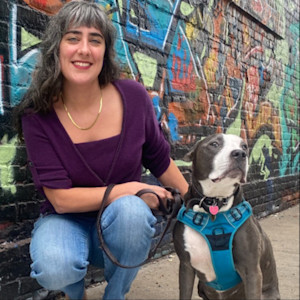
Kate Mooney
Kate Mooney is a Brooklyn-based writer with work in The New York Times, GQ, Vox, and more.
Related articles
![Dachshund in the grass]()
The Real Reason Dachshunds Look Like Hot Dogs
Turns out, it’s not just for the cute factor.
![designer dog breed Labradoodle on a leash looking at the camera]()
From Goldendoodles to Puggles — the Truth About “Designer Dogs”
Do your research. Know the facts.
![A dog running with a woman on a pier.]()
8 Questions to Ask Yourself When Choosing a Dog Breed
Find out which dog breed is right for your lifestyle.
![A woman holding a French bulldog over her shoulder.]()
Bulldogs and Other Flat-Faced Breeds Are Being Banned. Here’s Why
Breeds with those squished-in faces are charming — but their health issues are not.
![Girl sitting on couch hugging her playful dog with the window open to outside]()
7 Myths About Rescue Animals—Debunked
For starters: No, they’re not all traumatized and yes, you can find a purebred puppy at a shelter.
![Woman with her French Bulldog at home on the bed.]()
Is Gen Z Shopping for Dogs Instead of Adopting Because of Social Media?
Shelters are overflowing. One shelter volunteer tells us Gen Z is to blame, but is this true?
